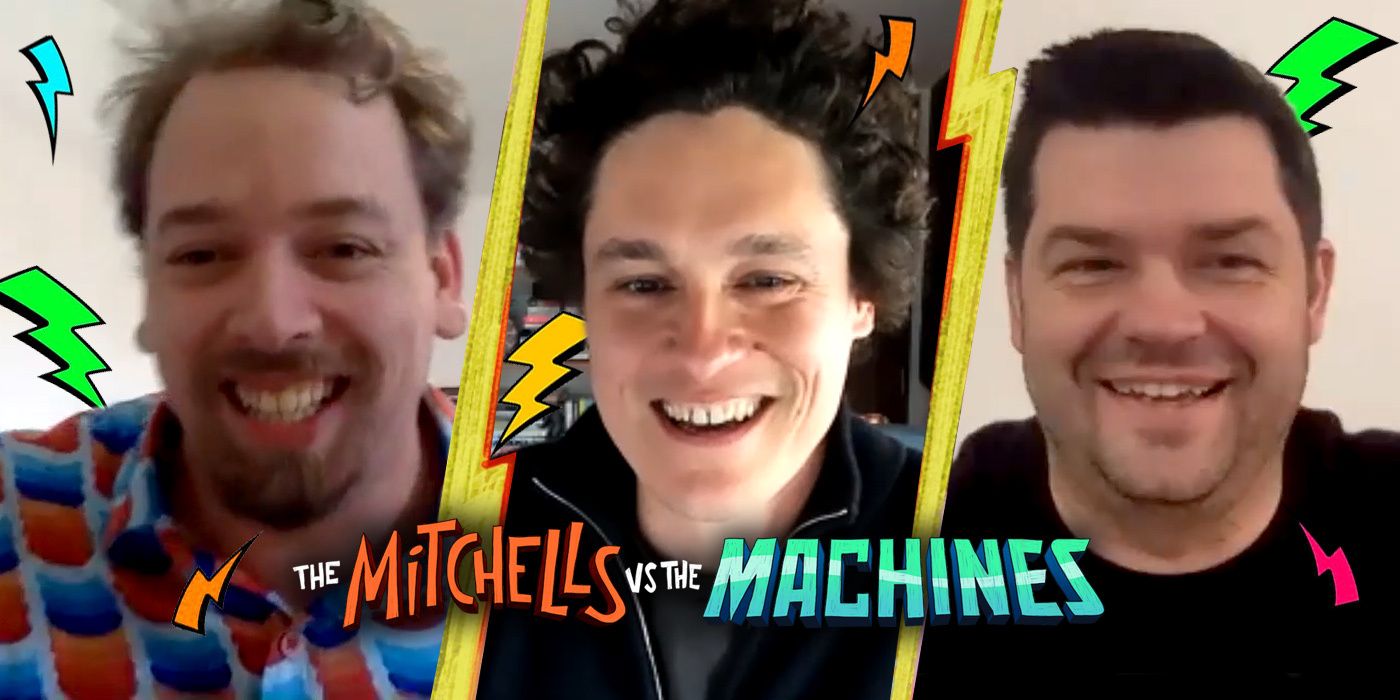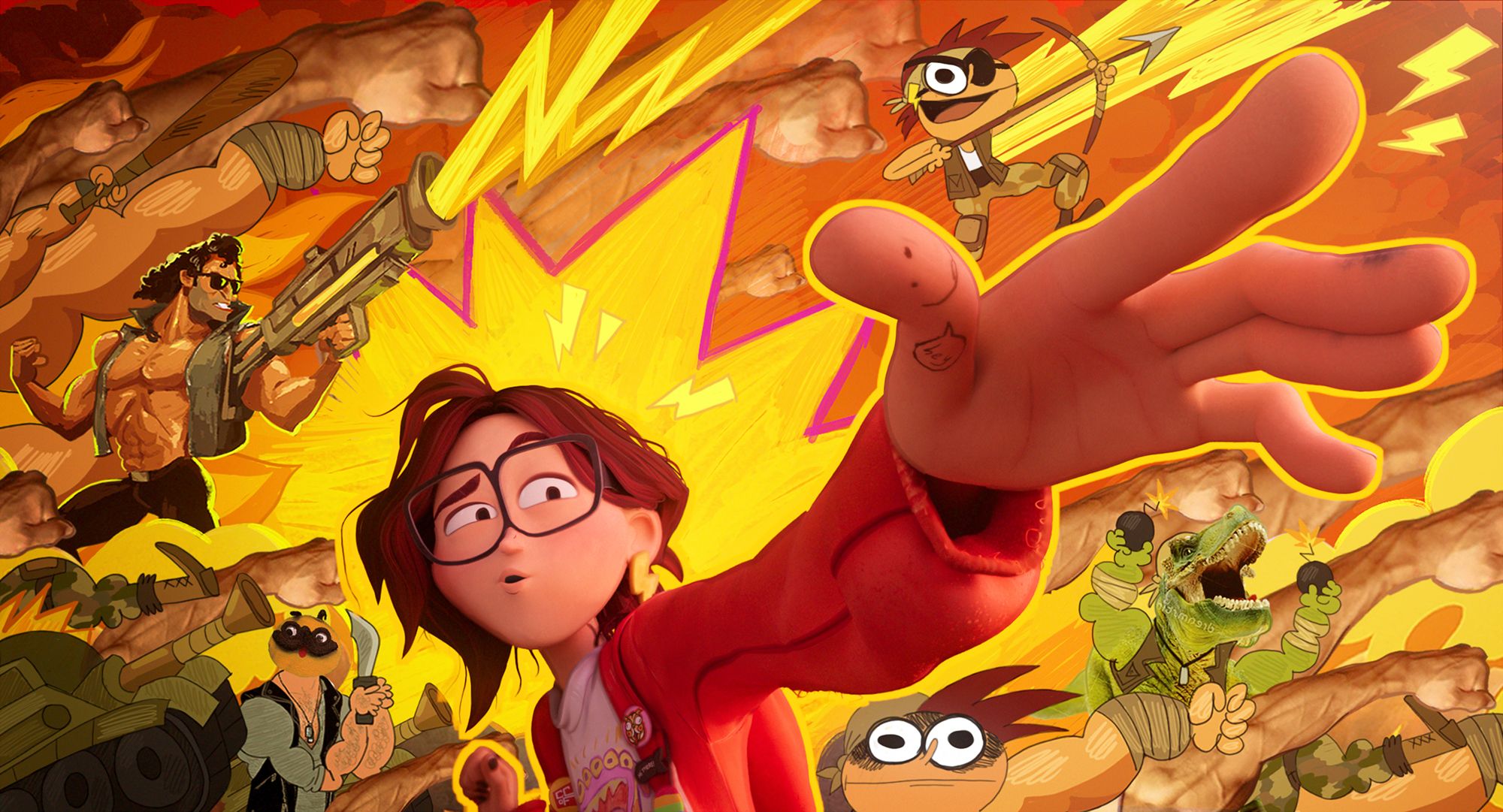[Editor's note: The above interview contains spoilers for The Mitchells vs. the Machines.]
Animation is not a genre, it’s a medium. The possibilities are endless, and yet a not-insignificant amount of major studio-produced animated movies seem to follow well-worn territory again and again, almost beat-for-beat. Which is why it’s so refreshing when something like The Mitchells vs. the Machines comes along. In the vein of Spider-Man: Into the Spider-Verse or Cloudy with a Chance of Meatballs, The Mitchells vs. the Machines embraces the boundless creativity that’s possible when working in animation, pushing the medium forward in ways that are exciting and eye-popping and yet also fully in step with the film’s characters and themes. Ensuring that the central family's story arc felt real and thematically engaging was of the utmost importance, as director/co-writer Mike Rianda and producers Phil Lord and Chris Miller explained to me in a recent extended, exclusive interview about the making of the film.
Produced by Sony Pictures Animation and distributed by Netflix, The Mitchells vs. the Machines is the story of a dysfunctional family struggling to understand one another. Katie Mitchell (Abbi Jacobson) has always loved movies, and now she’s heading off to college to be surrounded by “her people” as she aims to make a career out of being a filmmaker. Her father Rick (Danny McBride) is confused and semi-hostile towards the technology Katie uses to create (and communicate), which has only strained their relationship further as Katie and Rick have seemingly grown in opposite directions.
On the eve of Katie’s flight to college, her father decides a family road trip is just the thing to fix their relationship, and he thus cancels her flight and loads up Katie, her kind-hearted mother Linda (Maya Rudolph), her dinosaur-obsessed younger brother Aaron (Rianda), and the family’s loaf-ish yet lovable dog Monchi to drive her to college. But when the machine apocalypse occurs during their trip, the family must pull together to prove humanity is worth saving.
The Mitchells vs. the Machines pushes the boundaries of animated storytelling by evoking Katie’s creativity in expressive, watercolor-inspired animation and meme-centric gags that further relay the way in which Katie (and her generation) expresses herself and communicates. While the visual storytelling in and of itself would be impressive, the fact that it’s all motivated by character and theme makes it all the more impactful. Especially as the film hinges its impact on deeply felt and quietly emotional moments that come frequently, and serve to not only make audiences cry but also allow them to build an even stronger sense of empathy with each of the characters. This is true even of the film’s villain, PAL, and the fact that we understand where each major character is coming from is just one of the many reasons why The Mitchells vs. the Machines is a cut above.
So given that the film is brilliant, I was thrilled to sit down with Rianda, Lord, and Miller to dig into how it was made and to break down some of the movie’s most memorable moments. They discussed how they hit upon the film’s unique animation style, how they went about making sure the emotional moments hit hard, why animating hair was such a challenge on this particular movie, and how the film’s story evolved. They also talked about the film’s ending, a scrapped idea for a post-credits scene, the instantly iconic Furby sequence, making the film’s protagonist part of the LGBTQ+ community without making it a plot point, creating a complex villain, if they’ve started thinking about sequel ideas, and much more.
It’s a wide-ranging, in-depth interview that digs into the making of what will surely end up being one of 2021’s best films. Check out the full conversation in the video above, and below is a list of topics that are discussed.
- When did they each know they wanted to be artists, and how did their families react when they told them?
- How did the idea for Mitchells vs. the Machines come about?
- When did Phil and Chris come onboard?
- How they made sure the emotional scenes worked, and how they made sure they didn’t lose the audience’s attention in them.
- How did they go about deciding how the film would look? They wanted to make this film look unique in its own way just as Spider-Verse looked unique, and talk about evoking watercolors in the animation.
- Why animating hair was such a huge challenge on this movie.
- How did the story evolve? They talk about how it went from a movie about people fighting to a movie about people getting along.
- Creating a complex villain, and refraining from falling into the trap of saying “phones are bad.”
- Where did the idea for the Furby sequence come from and how did it evolve, and did Uncut Gems help them?
- Finding the right memes to use in the movie, and expressing the idea that memes are tools that Katie uses to create and communicate and not simply something to make fun of or decry.
- How did they hit upon the right note for the film’s ending?
- Having to change the villain’s downfall when waterproof cell phones came out during production, and the idea for a post-credits scene that was never used.
- Making Katie a member of the LGBTQ+ community, and not using that as a plot point or a point of contention between her and her family.
- Putting together the voice cast, and what they brought to the film.
- Mark Mothersbaugh’s terrific score.
- The experience of the film moving from Sony Pictures to Netflix, and getting to change back to their original title.
- Phil and Chris reveal they added another cough in the back speaker at the very beginning of the movie, like they did with 22 Jump Street.
- Any sequel plans? Rianda talks about an Easter Egg in the film that reveals Katie’s pitches for a sequel.


